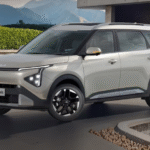The Indian automobile industry is buzzing with developments as of May 2025. From fluctuating sales figures to groundbreaking trade policies, the rise of electric vehicles, and persistent safety concerns, here’s a breakdown of the latest news shaping the automotive landscape.
April 2025 Sales: A Mixed Performance Across Brands
April 2025 brought a varied performance for India’s major automakers. Maruti Suzuki, the market leader, saw a 7% increase in total sales, reaching 1,79,791 units compared to 1,68,089 units in April 2024. However, its domestic passenger vehicle sales grew only slightly, from 1,37,952 units to 1,38,704 units. Kia India outperformed with an 18.3% rise in domestic sales, totaling 23,623 units, fueled by strong demand for the Sonet (8,068 units) and Seltos (6,135 units). JSW MG Motor India also shone with a 23% sales increase to 5,829 units, driven by the MG Windsor EV’s dominance in the electric segment. On the flip side, Hyundai and Tata Motors reported declines, reflecting the uneven market dynamics at play.
Tariff Reductions on High-End Car Imports from the UK
On May 7, 2025, India announced a significant trade policy shift, reducing tariffs on “high-end cars” imported from the UK from 100% to 10% under a new free trade agreement (FTA). This move aims to make premium vehicles more accessible to Indian buyers while boosting exports of Indian-made cars and bikes to the UK. Companies like Mahindra and TVS stand to gain from the elimination of export tariffs. While this could invigorate the luxury car market, it may also challenge domestic manufacturers to compete with more affordable imports, potentially reshaping the industry.
Electric Vehicles Surge Despite Policy Hurdles
The electric vehicle (EV) sector in India hit a milestone in April 2025, with passenger EV sales soaring 58% year-on-year to 12,330 units. JSW MG Motor India led the pack, selling 3,488 units—a 175% jump—thanks to the MG Windsor EV, which has topped the segment for seven straight months. The broader EV market, including two- and three-wheelers, also grew impressively, with retail sales reaching 167,629 units, up 45% from last year. However, policy inconsistencies on taxes, ethanol blending, and EV incentives continue to pose challenges, potentially discouraging global brands from introducing high-end models (above ₹20 lakh) to India.
Safety Concerns Highlight Urgent Need for Action
Road safety remains a critical issue in India’s automotive narrative. A recent BBC report revealed that over 172,000 lives were lost on Indian roads in 2023, averaging 474 deaths daily. Poor infrastructure, human behavior, and lax enforcement are key culprits. As the industry celebrates sales growth and innovation, these staggering statistics emphasize the need for stronger collaboration between manufacturers, policymakers, and society to enhance road safety and reduce fatalities.
Stay tuned to VGRides.in for more updates on India’s ever-evolving automobile industry!



